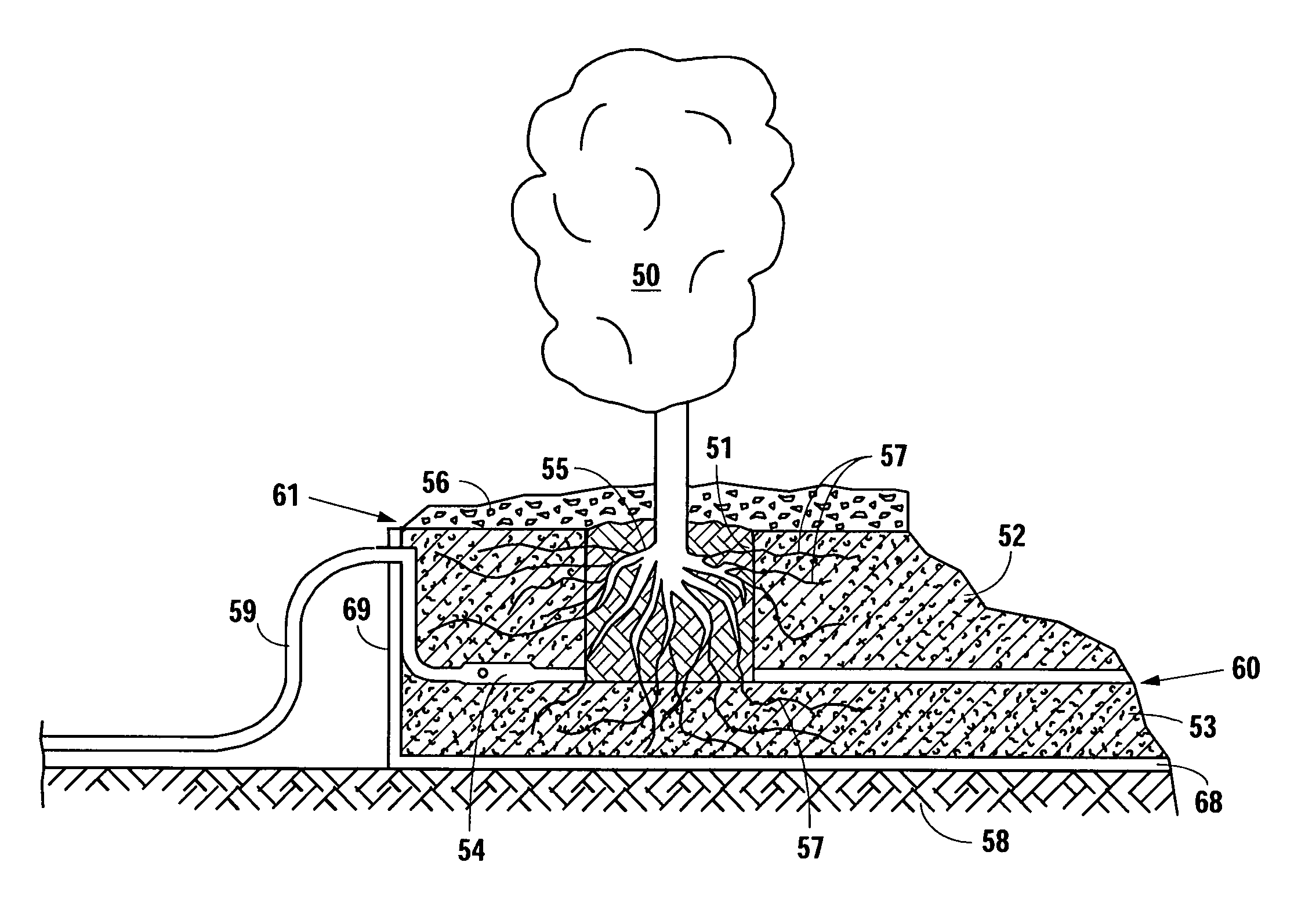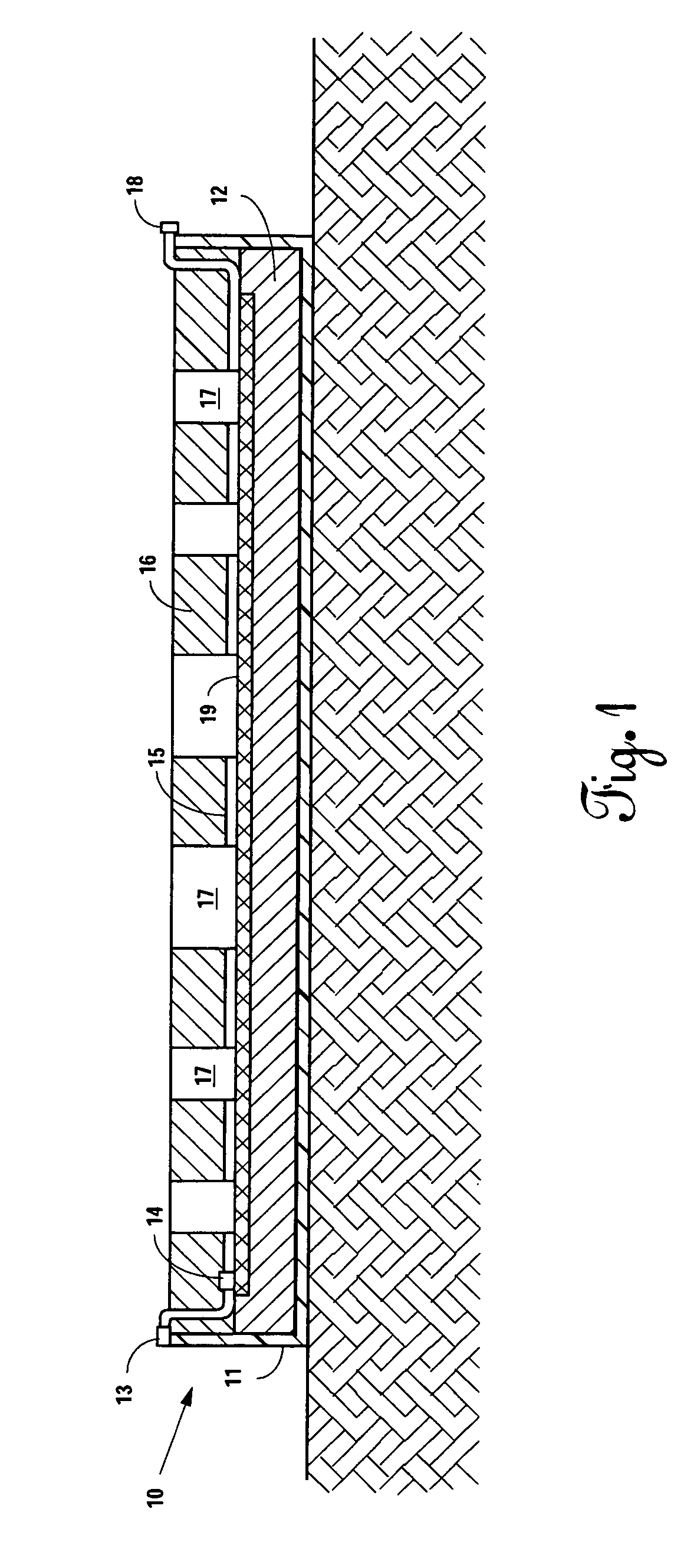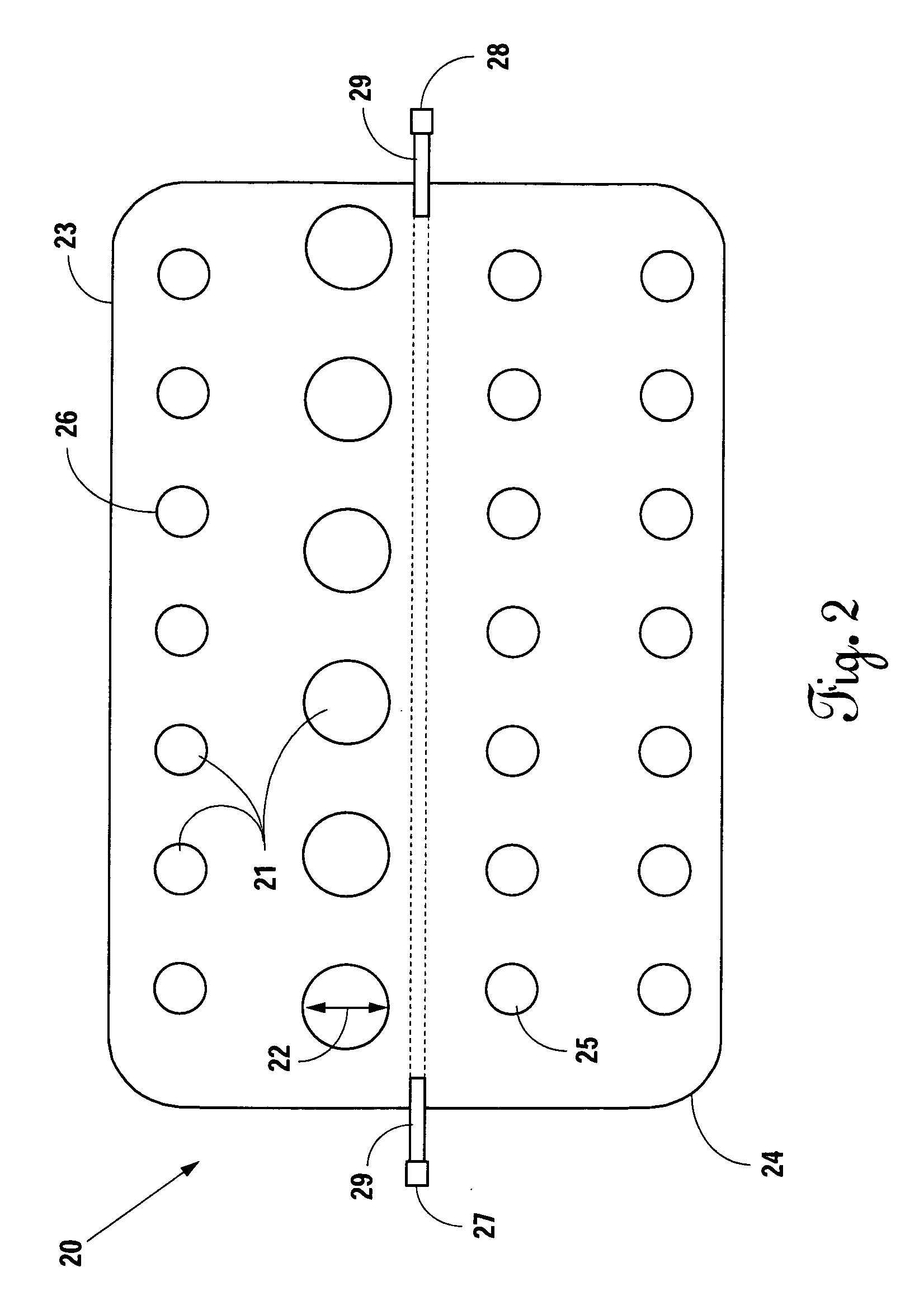This requires labor intensive berming of the perimeter of the landscape / flower
bed area and a source of water emission contained within the bermed perimeter.
The drawbacks of this form of flood irrigation for a landscape / flower
bed is efficiency due to
evaporation as the water sits on the surface of the bed and excessive loss of water due to deep
percolation past the root zone of the plantings in the landscape flower bed.
Another drawback of the conventional landscape / flower bed with a flood irrigation
system is the high level of labor required in the excavating and planting of the bed.
For landscape and flower plants, the soil must be a texture to allow for water and air to be available to the
plant at all times. Still another drawback of flood irrigation for flower / landscape beds is that by definition the entire area of the bed if flooded, providing
moisture for the weeds /
weed seeds which exist in the flower / landscape bed base soil, promoting the growth of the weeds.
This unintended
weed growth increases the labor requirement for maintaining well-kept flower landscape beds.
The unintended
weed growth can also result in increased chemical herbicide weed killer usage, which can result in increased chemical run-off and environmental damage.
Altogether, flood irrigation has been low on efficiency and high in labor requirements for landscape / flower beds installation of the bed and irrigation
system.
Due to the
irregular shape and varying width of flower / landscape beds, it is often impossible to target spray head water only on the intended flower / landscape bed without significant over spray into unintended areas.
Also, the distributing of water from these sprinkler devices is often interrupted in flower / landscape beds due to the height of the plantings in these areas creating irregular
wetting patterns.
Sprinkler irrigation in flower / landscape beds suffers from inefficiencies found in sprinkler irrigation of turf areas, namely high
evaporation losses from being thrown in the air and
evaporation from collecting on the leaf area material.
In addition to the inherent distribution inefficiencies of
broadcasting water through the air, sprinkler irrigation also suffers from the basic inefficiency of attempting to irrigate the entire flower / landscape bed while the planting area may only cover as little as 50 percent of the bed.
In all, sprinkler irrigation for flower / landscape beds, while being the most widely used form of irrigation, falls short of efficiency and is labor intensive and complicated to install and design.
The grid results in subsurface watering, but is subject to several limitations and inefficiencies.
The
physics of water movement through various textures of soil can act to limit the efficiency of subsurface
drip irrigation.
In addition to dropping below the root zone of the plantings, the fact that the grid irrigates the entire bed area, where the plantings may only occupy 50 percent of the bed area, the efficiency of the water placement is reduced.
To prevent damage from tools and shovels the lines must be buried as deep as possible, however this just makes the problem of water loss below the root zone greater.
In addition to efficiency and maintenance concerns, there is also the increased labor requirements of installing the subsurface
system.
While this patent method does provide a controlled root zone, it is very expensive to provide the excavation and material for the root zone growth.
Also, the method suffers from being the most labor intensive of all types of flower / landscape bed installation, requiring complete excavation to a significant depth and total replacement of the root zone growth material.
Another limitation of this type of system is that it must be installed perfectly flat and in a descending order if more than one unit is installed in a serial manner.
So that in addition to all of the additional labor requirements, there is extensive grading and leveling requirements.
This system attempts to improve efficiency but does so at great expense in cost of labor and materials.
This form of irrigation does provide increased efficiency due to watering at the plants only but is extremely sensitive to disturbance on the surface by tools and maintenance activities.
The small molded and extruded plastic components of this form of irrigation are easily destroyed by normal gardening activities such as raking and digging, removing weeds, planting new flower / landscape beds, etc.
Another danger is that because of the small
diameter tubing and emitters that the point emission devices get moved away from the intended watering areas, increasing inefficiency in the irrigation system.
While the surface
drip irrigation system is not as labor intensive as the flood, sprinkler and subsurface
drip irrigation systems to install, it is still fairly design and labor intensive to calculate the proper flow rate for each emitter / planting combination and the properly
layout the entire system.
This system can be classified as a form of
subsurface irrigation but because it is a continuous product intended for turf, it is not efficient for the irrigation of flower / landscape plantings.
Aside from the labor requirement of installing whatever form of irrigation system is selected for the flower / landscape bed, there is a significant element of labor required in the preparation of the flowerbed itself.
While this methodology provides a very aesthetically pleasing display of the
plant life, it presents a very problematic situation from a
plant maintenance point of view.
One common difficulty with
hanging basket gardening is that, because the plant material is planted in soil, the soil medium must have drainage, as non-drained soil loses all of the air in its pore space causing the plant to rot and die in the anaerobic conditions.
The limited amount of soil that can be contained in the volume of the
hanging basket also increases the frequency of watering.
The requirement of frequent watering has been a source of consternation for gardeners as the plants frequently
die back.
The overriding limitation of this approach to extending the watering time is the relatively little amount of water that the reservoir can hold without taking up too much of the volume of soil available to the plants.
If the reservoir (which by definition has no drainage) is too great of a volume, the air available to the roots of the plants in the container becomes too small and the plant will rot, as it needs both air and
oxygen in an appropriate ratio.
The extra ten to twelve ounces of water does slightly extend the watering time, but can harm the growth of the plant material by limiting the amount of air available to the roots.
While this does contain an extra ten ounces of water within the bottom soil of the basket, it does so at the expense of the air that would have been contained in that soil.
The exchange of extra water for air within the soil means this approach has the same limitations as mentioned previously with reservoir systems.
While these
polymer gels will swell and cause the soil to contain additional water (as compared to untreated soil), they do not at the same time increase the air-holding capacity of the soil.
Moreover, research into the water-holding
polymer gels has found that the water contained and absorbed by these gels is held in too tight of a state for the roots of the plants to be able to effectively extract the water.
This approach, therefore, has had only limited success.
All in all, no one container planting system has been able to significantly extend the duration of time between required watering while also providing an optimum air and water combination to the root systems of the plants growing within the container.
 Login to View More
Login to View More  Login to View More
Login to View More 


